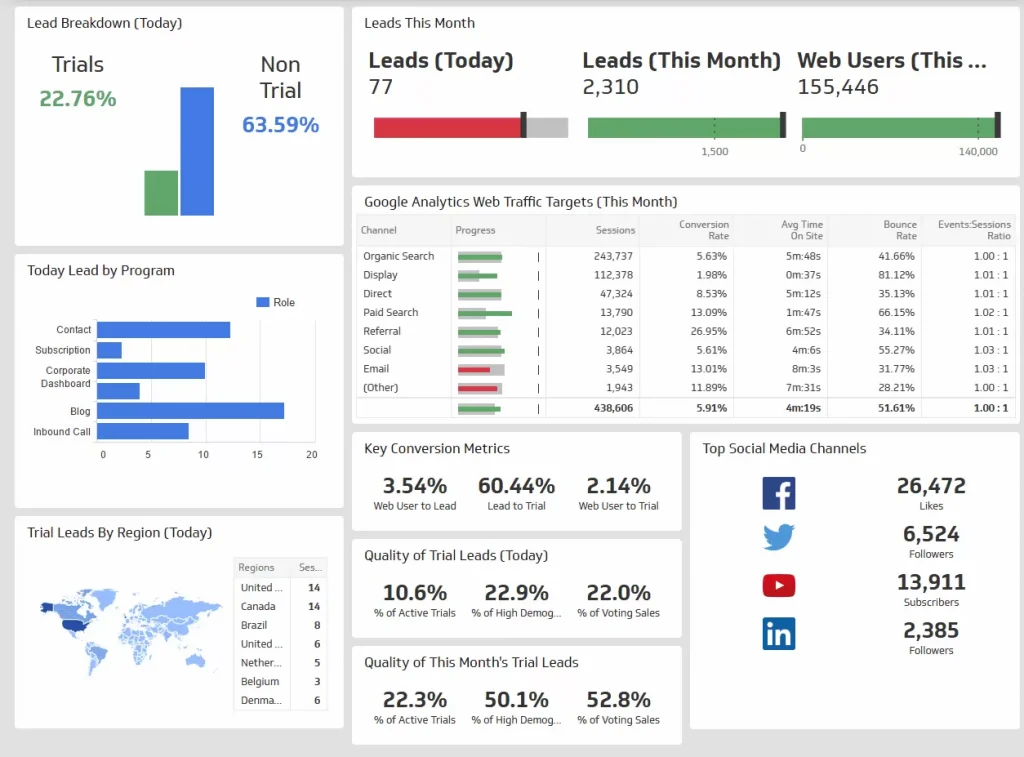Traditionally, every email marketer knew the feeling of satisfaction when an email goes out: one part relief, one part anxiety. When you hit “send,” the hard part is over, and you can sit back and wait for the results to roll in so you can judge whether or not the email you sent was successful.
But as there are now solutions that maximise every aspect of your email, AI machine learning hyper-personalisation solutions, it is so accurate to the individual receiving it, that you already know it could not be improved. Running alongside your ESP, solutions hyper-personalisation is accredited by McKinsey and Statista to deliver 20x (yes – you read that correctly, – twenty times) the return otherwise achieved. However, no matter how accurate, it still has to be measured against your ESPs promotional and marketing emails, for reassurance as much as anything else.
But what email metrics and key performance indicators (KPIs) should you measure? What do your email service provider (ESP) or marketing automation platform (MAP) and third-party analytics tools offer you?
Basic and advanced email metrics
Let’s dive a little deeper into each of these email marketing metrics, what they mean, and how to calculate them. Keep in mind: Be sure to have a holistic view of email metrics and benchmark against your program. You don’t know what’s “good” or “bad” for a brand or the tactics used to achieve their numbers. All that matters is that your program continually strives to be better.
Open rate
The open rate is how many of your delivered emails were “opened” and is great for gauging the effectiveness of subject lines, monitoring email deliverability, and measuring high-level subscriber engagement. Here’s how to calculate this:
Open rate = (number of emails opened / number of emails delivered) x 100
Not sure what delivered means? Skip to the bounce rate section below.
“Opened” is in quotation marks because an open is registered if your email tool’s open tracking pixel was loaded. This can happen if someone has their inbox preview pane on by default or opens your email just to delete it. In other words, people may not have opened or read your email. It also means if people have images blocked, you can’t see whether or not they opened your email (even if they did). There’s a reason many call the open rate a vanity metric.
And with Apple’s Mail Privacy Protection on the horizon, the open rate for your Apple Mail users may be overinflated (and useless). So be careful not to rely too heavily on open rates for overall program success, especially if your audience is largely made up of Apple Mail users.
Email read rate or read time
The read rate is how many of your opened emails were read. This is a great metric for editorial emails, important updates like privacy notices, and those without a call-to-action (CTA). To calculate this:
Read rate = (number of emails read / number of emails opened) x 100
The definition of “read” may differ depending on your email tool, but in most cases, it’s having an email opened for eight or more seconds.

Click-through rate (CTR)
The click-through rate (CTR) is how many of your delivered emails were clicked on. Some may refer to CTR as clicks over opened instead, but for clarity, we’re using delivered here and will talk about the measure of clicks against opens in the next section. How do you calculate CTR?
Click-through rate = (number of emails clicked / number of emails delivered) x 100
The CTR leaves opens out of the equation, giving you an unbiased look at email performance.
Click-to-open rate (CTOR)
The click-to-open rate (CTOR) is how many of your opened emails were clicked on. This is different from CTR as it relies on opens and is a great way to measure the effectiveness of your subject line. Did your email meet the expectations set in your subject line and preview text (high CTOR)? Or was it merely misleading (low CTOR)? Here’s how to calculate CTOR:
Click-to-open rate = (number of emails clicked / number of emails opened) x 100
Want to up your subject line game? Check out these 18 subject line tips from experts.
Unsubscribe (Suppression) rate
The unsubscribe rate measures how many people opt out of your emails, and in general, you want to aim for less than 1-2% to stay on the good side of deliverability. To calculate this:
Unsubscribe rate = (number of unsubscribes/number of emails delivered) x 100
Depending on your email platform, an unsubscribe may be recorded if a person actually opts out or if they just click your unsubscribe link.
Keeping track of your unsubscribe rate is a nice way to check on how healthy your email list and permission practices are and if certain content doesn’t resonate well with a specific audience. Unsubscribes are not necessarily bad—letting go is infinitely better than being marked as spam—so be sure to make unsubscribing painless.
Bounce rate
The email bounce rate is how many of your sent emails bounced—or weren’t delivered—regardless of whether it was a hard bounce or a soft bounce. How do you calculate this?
Bounce rate = (number of emails bounced / number of emails sent) x 100
On the flip side, you may choose to measure the delivered rate instead, which is 100% minus the bounce rate. So if your bounce rate is 5%, then your delivered rate is 95%. For any calculation that calls for the number of emails delivered, it should be the number of sent emails minus the number of bounced emails.
You want to aim for a bounce rate of 2% or less (or a delivered rate of 98% or more).
If your bounce rate is too high, it’s a sign the email addresses on your list are bad, usually due to poor email list hygiene or problematic acquisition sources (you aren’t buying or renting lists, right?). If you don’t do something about it right away, this can ultimately hurt your ability to land in the inbox.
Spam complaint rate
What else can throw your emails into the junk folder? The spam complaint rate. It measures how many people report or mark your email as spam. Here’s how to get this number:
Spam complaint rate = (number of spam complaints/number of emails delivered) x 100
Anything above 0.1% is concerning. You normally get spam complaints if people don’t know or remember you, are annoyed by your content, or don’t know how to unsubscribe. That’s why it’s important to make finding the unsubscribe link and the actual unsubscribe process ridiculously easy. You may also want to take a closer look at your acquisition practices, send frequency, and content or segmentation strategies.
Deliverability rate or inbox placement rate
All of the above (and so many other factors no one knows) play into your deliverability rate a.k.a. inbox placement rate. The deliverability rate is how many of your emails land in the inbox vs. the junk or spam folder. The difference between deliverability and delivered is that an email counts as delivered even if it’s in junk—in other words, was received by inbox providers—whereas deliverability specifically looks at where your email was delivered. This is how to measure deliverability:
Deliverability rate = (number of non-junked emails delivered / number of emails delivered) x 100
If your inbox placement rate is low—less than 80%—it may mean you’re not sending the right content to the right audience at the right time. No, we’re not talking about spam trigger words. It’s much more complicated than that. The top things are to make sure you have a great list, authenticate your emails, and send relevant content.
Conversion rate (CVR)
The email conversion rate measures how many people took the action you wanted them to from your email. Conversion depends on your email’s goal and could be anything from a purchase or donation to a webinar sign-up or ebook download. This is how it’s calculated:
Conversion rate = (number of conversions/number of emails delivered) x 100
It is important to look at conversion rates based on email clicks to see a direct attribution, but looking at it from how many emails were delivered gives you a view into indirect attribution. Just because someone didn’t click your email doesn’t mean they didn’t convert because of it.
Revenue per email (RPE)
Revenue per email (RPE) gives a direct monetary value to your email sends. Here’s how to get the number:
Revenue per email = revenue generated / number of emails delivered
If you calculate this for different email types, you can reliably forecast email revenue as you plan for the months ahead. And if RPE is lower than your average? It could mean your content, product, or service isn’t hitting the right note with your audience.
Revenue per subscriber (RPS)
Revenue per subscriber (RPS) is a little different from RPE in that you’re looking at the value of an email subscriber, not an email send. This distinction is important to include all of your active subscribers, even the ones you don’t always send to (and you shouldn’t be sending everything to everyone anyway). How do you calculate RPS?
Revenue per subscriber = revenue generated / number of active subscribers
Be sure to look at a specific point in time, like last month or last year.
Subscriber lifetime value (LTV)
Subscriber lifetime value (LTV) measures the value a subscriber brings throughout their lifetime on your list. Truth be told, this one’s tricker to calculate because you’ll need to have the right data:
Subscriber lifetime value = monthly revenue per subscriber x average number of months a subscriber stays on your list
Months can be swapped with days, weeks, or years, depending on your subscriber lifecycle. To get the average time a subscriber stays on your list, you’ll have to look at your unsubscribe or suppression list and get the average time between their subscribe and unsubscribe dates.
For example, if your monthly RPS is $30 and subscribers tend to stay on your list for 7 months before unsubscribing, then consider your subscriber LTV to be $210.
Subscriber LTV is an especially useful metric when compared to acquisition cost (more on that below) because you’ll want to make sure LTV is higher to make the acquisition effort worthwhile. You may even want to calculate LTV per acquisition source to determine which sources are or aren’t working.
I also like to use this when considering whether or not an email is worth sending based on the value of subscribers I can expect to lose from unsubscribing vs. the value I get from sending the email.
Return on investment (ROI)
Email marketing return on investment (ROI) is a measure of how much value your email marketing program delivers versus how much it costs. It’s calculated like this:
Return on investment = (email revenue – email marketing cost) / email marketing cost
Your email marketing cost may be hard to measure unless you manage the email marketing budget. This cost considers both your tools and your team (including agencies, contractors, and freelancers). ROI, and especially potential ROI, is the perfect way to get a budget for more resources or buy-in for a new project.
Forwards
Email forwards are how many times people click the forward function in their email client after they open your email. Pretty straightforward, right?
This is something you want to keep track of if your goal is to create share-worthy content. To get this:
Forward rate = (number of emails forwarded / number of emails opened) x 100
Prints
Prints measure how many people click the print function within the email client after they open your email. Consider this metric for coupons that need to be printed and brought in-store as well as things like instructions, directions, tickets, or confirmations. Here’s how to get this number:
Print rate = (number of emails printed / number of emails opened) x 100
Email list size or growth rate
Without an email list, you have no one to send your emails to. And if your list isn’t growing? Then your email program can’t grow either. Email list growth is how much your list is growing instead of churning. So, you always want this to be positive. To calculate this:
List growth rate = ((monthly new subscribers – monthly churned subscribers) / list size) x 100
Feel free to swap the monthly period with one that makes sense for your brand.
Alternatively, you could look at the churn rate which measures how many people are removed or suppressed from your email list. This would include unsubscribes, bounces, manual removals, or even unengaged subscribers. It’s good to have this number so you know how much you need to grow your list to have a positive growth rate. Here’s how to get that:
Churn rate = (monthly churned subscribers/list size at beginning of month) x 100
Subscriber acquisition cost
Email subscriber acquisition cost is how much it costs on average to get one new subscriber. This one’s useful for those who do paid ads, giveaways, or co-marketing campaigns. How do you get this number?
Email subscriber acquisition cost = marketing or ad cost/number of new subscribers
A lower cost seems ideal at first, but that can sometimes mean lower-quality subscribers. Use your subscriber LTV to drive how much you’re willing to spend on high-quality email subscribers.
Email production time
How efficient is your email marketing process? Where can you make improvements? Knowing your email production time can help with that. There are two types of time you’ll want to keep track of:
- Actual time to complete each task (e.g. 90 minutes to code one email)
- The time period from email conception to execution (e.g. 14 days to create and send one email)
Email mistakes or error rate
Everyone makes mistakes, but making too many is bad for brand reputation, trust, and credibility.
A high error rate may mean you need to slow down or improve your QA process. Here’s how to calculate this:
Error rate = (monthly number of emails sent with an error / monthly number of emails sent) x 100
As with many of the calculations here, choose a time period that best fits your needs. It doesn’t have to be every month. The higher your send frequency, the shorter the time period you’ll want to look at. For example, if you sent 54 emails this quarter and 2 of them had a mistake, then your error rate would be 3.7%.
Tracking the right email KPIs matters
You can’t keep track of every possible data point—nor should you. And one metric might be important for one campaign but not another. It all boils down to your goals and what KPIs can help you measure success toward those goals. Empowered with the right insights, you can see what works and what needs improvement so you’re always delivering what both your subscribers and stakeholders want.





